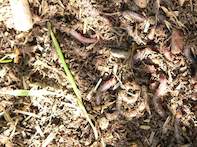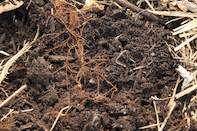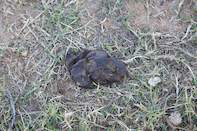Biological farming developed around the 1980s in reaction to conventional farming practices. Where conventional farming practices entail the use of chemical inputs to produce a crop or livestock, biological farming focuses on creating favourable soil environment.

Like organic farming the idea is to farm with and not against nature, but the use of chemical fertilisers and pesticides are allowed to achieve certain production goals. The soil is seen as the heart of biological farming, with optimal production conditions being achieved when the soil’s chemical, physical and microbiological properties are in balance.
Biological farming principles are usually not used on their own, but incorporated in conventional farming or organic farming systems. The Australian farmer, Gary Zimmer is seen as the pioneer of biological farming and wrote the first book on the topic, The Biological Farmer, in 2000.
Soil Basics
Biological farmers view the soil as a living organisms. As such, soil does not only consist of mineral dust, but forms an ecosystem made up of different kinds of microbes and soil organisms.
The aim with biological farming is to balance soil chemistry and improve the soil structure to create an environment where a wide variety of soil organisms can thrive. The interaction of these creates more favourable crop production conditions, resulting in healthier and more resilient plants.
Balancing Soil Chemistry
With this production method, farmers do not merely add fertiliser to address nutrient deficiencies but aim to correct nutrient imbalances. Soil analysis, in effect, goes beyond the mere analysis of Nitrogen, Phosphate and Potassium.
This is because chemical imbalances have a direct impact on soil infrastructure and the availability of certain nutrients. The ideal balance will also depend on the soil type, for example, whether the soil is sandy, loam or clay.
Increasing magnesium, for example, will increase the water holding capacity of a soil, but having too much will result in the soil becoming sticky and hard. Calcium, on the other hand, may help to loosen soils, whereas over liming will result in a lot of run-off.
Along with this, the impact of soil pH on the availability of nutrients is considered. Soils are considered acidic below a pH of 5 and alkaline above 7.5. The ideal soil pH is close to neutral falling in a range of 6 to 7.5, as this is the range in which most nutrients are optimally available to the plant and suited to the growth of most plant species.
The Soil Structure

Soil structure is important, because it has an impact on the water holding capacity of the soil as well as air movement. With too little air, the soil becomes anaerobic resulting in an overgrowth of anaerobic organisms, many of which cause damage to crops. The same happens when there is too much water: Plants suffocate and beneficial organisms drown.
Biological farmers aim to improve the soil structure through the balancing of soil chemistry, the use of cover crops, by avoiding compaction and establishing a healthy soil ecosystem.
Biodiversity

Having a great biodiversity results in more resilient production systems, with beneficial organisms helping to keep harmful organisms in check and also providing valuable eco-services.
Mycorrhizae fungi, for example, colonise plant root, forming a biological link between the roots and the soil. The fungi affect the composition of micro-organisms around the root system and directly or through its symbiotic relationship with these organisms improve nutrient and water uptake.
Biological farmers aim to boost soil life, through the use of carbon from compost, green manures, compost teas, livestock manure, crop residues, crop rotation and soil amendments. The methods used will depend on the availability of material and cost of production. (Read more: Manure and Organic Farming, What is Crop Rotation, Green Manure and Soil Health, Compost Teas and Compost)
To avoid damage to beneficial organisms, they also use pesticides and herbicides in minimum amounts and only when absolutely necessary.